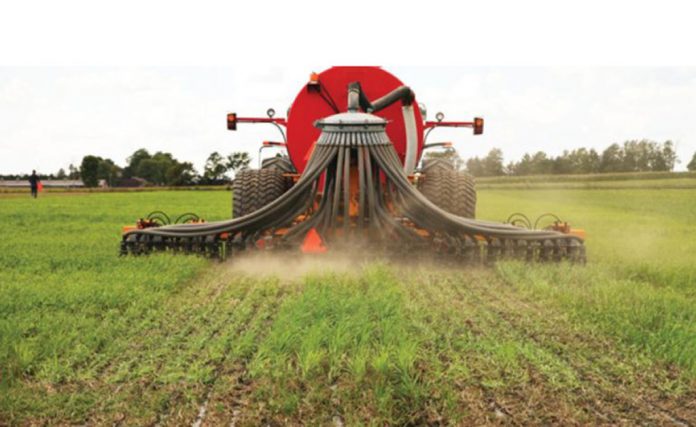As H2Ohio and other water quality efforts continue to roll out across northwest Ohio, farmers, environmentalists and more are watching to see what kind of impact they have on the state’s water quality. To help measure that, the Ohio Agriculture and Conservation Initiative is establishing baselines for conservation practices and ways to improve at both the farm level, and in watersheds.
The group, made up of conservation, agricultural, research and environmental organizations, was formed to create a farmer certification program, and to create assessments to help monitor what best management practices are being used in specific watersheds. Board members presented updates about both of those programs and what’s next for the OACI in a virtual panel April 13.
“I am really excited this evening to have what I consider the experts … people who are closest to this issue which concerns us up here in northwest Ohio and across the state of Ohio,” said Ohio Rep. Paula Hicks-Hudson, D-Toledo. “And that is how we can balance our food and desire for farm products, supplies, food, oil … and come together and have a way in which we also protect our water and our other resources.”
Certification
To date, OACI’s certification program has more than 2,000 farmers in the system, with 2 million acres represented. Farmers participating in H2Ohio are required to enroll in the program, which is administered by the Ohio Federation of Soil and Water Conservation Districts. Farmers are scored in soil testing, nutrient application, in-field management and structural practices.
About 80% of the farmers who apply for certification pass, said Jordan Hoewischer, director of water quality and research for the Ohio Farm Bureau Federation.
“And the 20% who don’t pass are pretty curious and sometimes, a little angry, because they want to be proud of what they’re doing,” Hoewischer said. “And they want to be, you know, understanding of what they’re doing differently than what other farmers are doing that are passing.”
That leads to a lot of conversations between farmers who don’t pass certification and soil and water staff about what the scores mean, and what farmers who pass are doing differently.
But, Hoewischer added, he sees the certification process as more of a baseline. He’s more concerned about seeing improvement year over year for all farmers than about exactly how many pass or don’t pass, since farmers come from different backgrounds and have different challenges.
Some of the farmers applying for certification haven’t worked with soil and water conservation districts before on their farms. So, the program is also getting new faces through the door, Hoewischer said.
“That’s one of the best things, I think, to come out of this program, is creating those relationships between farmers and some of the professionals that are out there, whether it’s soil and water, NRCS, OSU Extension,” said Tadd Nicholson, executive director of the Ohio Corn and Wheat Association.
Assessment
The OACI released its first assessment report in March. The report covered the Lower Maumee watershed. It and other reports are intended to provide a baseline of conservation practices in a particular watershed, and then show how those practices change over the years.
“We’ve got the results from this year. We can then look forward and see what happens in 2024, and we can do a comparison of how much progress has been made over those three years in terms of adoption of practices, and kind of moving the needle,” said John Fulton, professor and extension specialist with Ohio State University’s College of Food, Agricultural and Environmental Sciences.
The assessments could help draw connections between farm practices and stream monitoring results, as well.
Next steps
Going forward, the OACI plans to keep refining the certification program. That includes getting farmers with a wider range of crops, like fruit or vegetables, involved in the program. Continuing to develop education and outreach to help farmers improve their practices is another priority for the program.
The OACI is also working on assessments for two more watersheds this year, and plans to return to each watershed every three years to measure progress.










